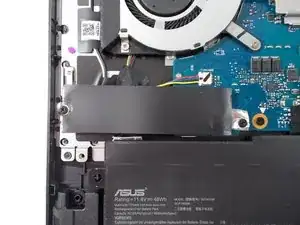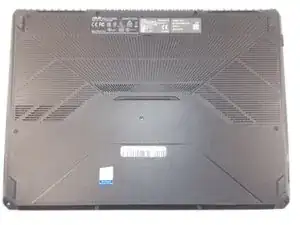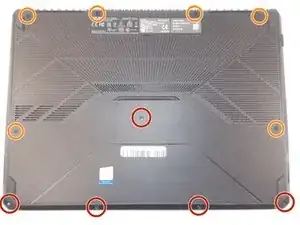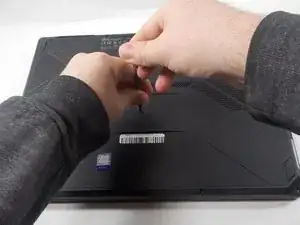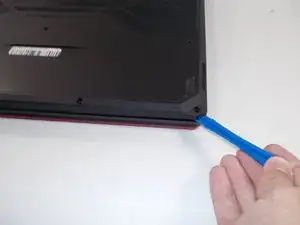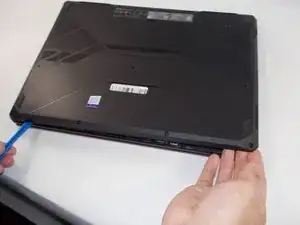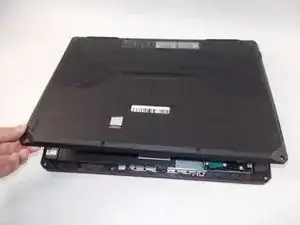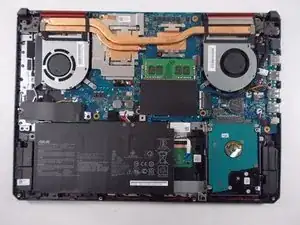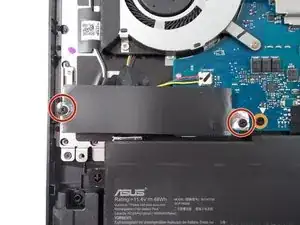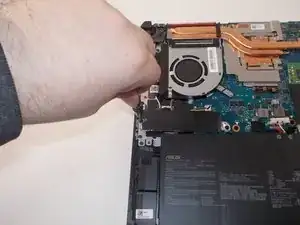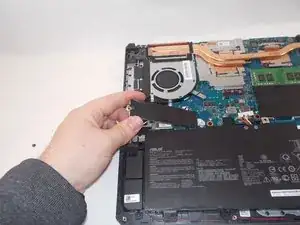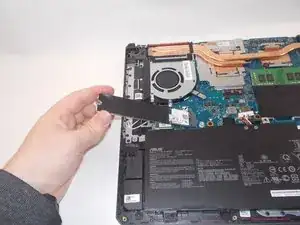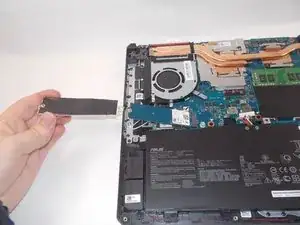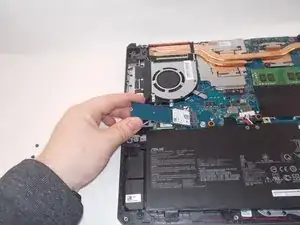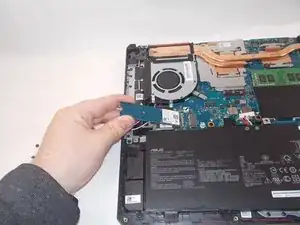Einleitung
This guide is for replacing the solid state drive of the ASUS TUF Gaming FX505DY, a M.2 2280 NVMe form factor drive.
Solid state drives are more reliable than hard drives, but are prone to overheating and more expensive. These drives contain no moving parts, making them less susceptible to drops or impacts. They can still be damaged by them, and due to their thin size can crack. Solid state drives can be overwritten more times than a hard drive and are more stable. Lifespan is generally measured in full write cycles, with lifespans potentially exceeding 10,000 cycles. In years, solid state drives can last over ten years in optimal conditions.
A faulty solid state drive or full solid state drive can cause the ASUS TUF Gaming FX505DY to not boot to the operating system or have trouble reading and writing to the drive. Check the troubleshooting guide before replacing the drive, as many relevant issues are caused by software or infections. A full solid state drive can be replaced by one with more storage, but backups should be made, and if the full drive is the boot drive, a copy of the operating system installation disk should be made or acquired first.
If your drive has anything of value you want to keep, make a backup or move the files to a new disk first. To prevent data or identity theft, ensure your old drive has been properly cleaned and wiped or destroyed before recycling. Recycling can be done through local partners or online. One such program is run by Western Digital on their website.
Make sure to fully shut down the device and unplug any chargers and peripherals before beginning.
Werkzeuge
Ersatzteile
-
-
Turn off the laptop.
-
Disconnect the charging cable.
-
Flip the laptop so the back is facing up.
-
-
-
Remove the five 6 mm screws securing the back panel using a Phillips #1 screwdriver.
-
Remove the six 13 mm screws securing the back panel using a Phillips #1 screwdriver.
-
-
-
Insert the plastic opening tool at a corner and pry up along the edges, leaving the back side with the hinges for last.
-
-
-
Gently lift up the back panel to release any remaining clips on the side with the hinges and remove the panel.
-
-
-
Remove the two 3 mm screws holding the solid state drive and its foil wrap in place using a Phillips #1 screwdriver.
-
To reassemble your device, follow these instructions in reverse order.
